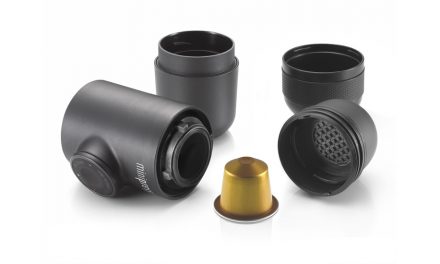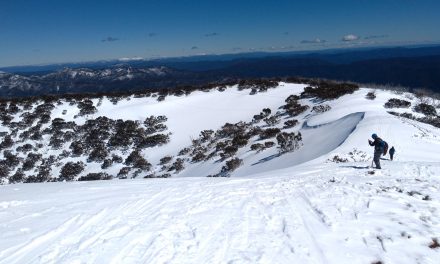The new Farpoint Trek is an evolution of Osprey’s popular Farpoint travel pack. It gains features specifically suited to bushwalking such as a brilliant harness, side water bottle and hip belt pockets, and deletes travel-specific items such as the harness cover flap and removable daypack.
The Osprey Farpoint Trek combines technical backpacking with travel pack elements, to create a pack that’s designed for long-haul trips as well as serious bushwalks. Farpoint Trek comes in 55 and 75-litre volumes. To complement the Farpoint Trek, Osprey also has the shorter Fairview Trek 70 model, designed to fit women’s anatomy with specially shaped and contoured shoulder straps and hip belt.
The Bushwalking Blog has previously examined Osprey’s bushwalking packs, the lightweight model Exos, and also their solid performer Rook.
Let’s take a close look at a new Petrol Blue Farpoint Trek 75 adventure pack:
Travel Features
Zip failures on luggage are catastrophic, Osprey has effectively eliminated this possibility by using such a hefty zip, and then protecting it with two transverse straps, all neatly concealed under a storm flap.
Inside: The rectangular bag has a generous volume. Two side wings clamp your gear inside so everything should be in the same place when you open your bag up again. This is important as the bag can be carried horizontally with its suitcase handle or flipped vertically as a backpack. The interior is lined with a light blue fabric, which makes it easier to find things in low light conditions.
AirCover: Farpoint Trek comes with a new transport cover in its own zippered storage pocket. This is a great idea to easily and completely stow away all the harness straps. This prevents strap entanglement and buckle damage on baggage conveyors. It also stops baggage handlers from hauling your sack up by the compression straps or other vulnerable points such as zip pulls.
AirCover’s ripstop fabric is heavier than a regular rain cover and it is fully seam-sealed. Osprey say it doubles as a rain cover, but as it’s not elasticated it is not a snug-fitting as a dedicated rain cover. It has a luggage label window and lockable zips. If needed, the AirCover can double as an additional “blow out” piece of luggage, to carry all those souvenirs back home.
Security: This is a strong point of this bag. The main external zipper has two sliders with integral 4mm diameter loops, large enough for a proper 20mm size padlock to be fitted. (Unfortunately, Osprey have also included an unnecessary “Sleeping Bag” access zip on this bag within the main lid. This zip is not lockable and presents a security risk.)
One internal wing contains a hidden zippered pocket, and the underside of the internal divider panel also has a discrete zippered compartment.
The top and front external zippered compartments are well sized and readily accessed- you don’t need to fumble around inside the main body of the bag for your wallet or documents. A whistle is moulded into the sternum strap buckle.
The AirCover – also with lockable sliders – fully contains the pack. The AirCover’s charcoal colour presents a benign exterior unlikely to attract unwanted attention, and less attractive to opportunistic thieves.
Size: In general, for airline carry-on baggage, the maximum allowed size (height plus depth plus width) is 115 cm. With its rigid frame, Farpoint Trek 75 is this size when empty. So, it’s going into the cargo hold.
Farpoint Trek also has these travel features:
- Padded side and top handles.
- Slim front zippered external pocket which holds A4 documents.
- Two internal compression straps to squeeze down the load before zipping the lid down.
- Female buckles to attach an optional day pack to the harness.
- Two front transverse straps to take load off the main zipper and tension the storm flap.
Hiking Features
This structure is invaluable for an all-day carry on hard city streets. Farpoint Trek 75 is a large pack capable of holding heavy loads and it needs to stand up to rough handling while loaded.
Harness: The Farpoint Trek 75 is a one size fits all pack. The harness is adjusted by moving a hook bracket into webbing loops. This is the same system as found on the Rook, which we found to be simple and effective. The overall range of adjustment is a useful 140mm achieved with four 35mm steps. The load lifters (straps which cinch the tops of the chest straps back to the bag) have two positions.
The chest and hip strap padding feel quite firm-this stiffness, of course, allows for greater comfort with heavier loads, where softer straps would tend to dig in.
Top Compartment: A conventional large zippered pocket with an internal key clip. Above this top pocket is a separate zippered pocket for the AirCover.
Hip Pockets: These are great for small items you want to access on the move: snacks, camera, small change, etc. Unfortunately, Farpoint Trek’s pockets are smaller than expected- not deep enough in fact to take a smartphone.
Hydration: There is an internal sleeve attached to the back panel for a water bladder. It is complete with a hanging hook, tube routing aperture and elastic loops on the chest straps. Osprey’s attention to detail is evident in the tiny eyelet to drain spills or condensation away.
Weight: Farpoint Trek 75 weighs 1800g, the removable AirCover weighs 350g. making a total of 2150 g. It gives very good load carrying capacity for its weight. The travel-specific features contribute to about a 500-gram weight penalty over an equivalent specific bushwalking pack. (Expressed another way, the hybrid penalty is about 2% of a fully-loaded pack, with say 23kg in it.)
The Farpoint Trek also has these bushwalking features:
- Two large mesh side pockets capable of each holding two water 1.25-litre bottles.
- Cord loops to lash on extra items.
- Extra length compression straps.
- Two sleeping mat straps to attach additional gear externally.
There are some omissions: The Farpoint Trek has no ice axe loops, walking stick stowage system, chest strap pockets, or large front pocket for wet tent flys or raincoat.
The Bag: Packcloth is mainly 420 HD denier nylon, with 500 denier nylon on the accent panels and bottom. This density is backpack grade rather than the heavier luggage grade, and conventional bushwalking backpacks typically use a stronger fabric and reinforcement on the base area. The packcloth looks and feels durable, and I would expect it to last for many years.
Sleeping Bag Compartment: Farpoint Trek has a U-shaped zip in the bottom of the pack, intended for sleeping bag access. A droppable flap inside completes the compartment. This feature is apparently well received by customers, who like the idea of securing their sleeping gear separately from the main compartment. In practice, this is an unnecessary inclusion, but one which other pack manufacturers including Osprey are happy to offer.
Warranty: Outdoor Agencies, the Australian distributor, warrants the product for two years.

What about real-world performance?
On the long hike, once on my back, the bag felt just like Osprey’s other bushwalking packs. The firm hip and shoulder padding felt good. Water bottle access, hydration system all works fine. The bag has just two upper side compression straps, so it doesn’t cinch down super small, but the front two transverse straps also compress and stabilise the load.
I did find it a bit odd having to lay the pack down on its harness to access my gear from the main compartment, but this is something you would easily get used to- except in poor weather. Overall Farpoint Trek performed flawlessly on the walk
On crowded public transport, without deploying the AirCover, the bag is a bit strappy and care needs to be taken for people to not step on the straps.
The top zippered pocket is close to the AirCover zippered pocket, and both open in the same direction, with a similar zip pull. I found myself inadvertently opening the wrong zip while reaching for my wallet on several occasions on public transport. This mild annoyance could be remedied by using a different zip pull or zip direction. (It would be even better if Osprey had placed the AirCover storage in the base of the bag, where it could add some useful padding).
On the long weekend away camping, Farpoint Trek stacked in the back of the wagon just like a suitcase. This is where the large front opening came into its own, allowing excellent access to all my clothing and gear instantly. Due to the large internal volume, separate packing cubes would be handy to organise your gear. As a travel case, Farpoint Trek is a winner.
Design, Comfort & Durability (Rating: 90%)
In the Farpoint Trek, with a careful blending of technical backpacking requirements with modern travel needs, they have happily produced an excellent hybrid, rather than a mongrel.
The high tensile frame and trampoline back panel set the foundations for this pack’s solid bushwalking performance. It’s hard to set a foot wrong when it’s based on such an innovative structure, and Osprey has simply built it up from there.
This is a well-made, dependable pack, capable of serious use.
Functionality & Ease of Use (Rating: 85%)
The sleeping bag compartment is unnecessary, and in this case, poses a security risk as the external zip sliders on this alternate access do not have lock holes.
Osprey usually provide a detailed owner’s manual for each of their models to explain the features and how to fit the pack. At the time of writing Osprey do not have a manual online for the Farpoint Trek or Fairview Trek.
What I Like
- Clean lines, simple non-fussy appearance.
- Trampoline back panel for comfort and ventilation. No sweaty back.
- Thoughtful, experienced design. Nice details, faultless build quality.
- Massive #10 YKK main zip.
- AirCover travel cover.
What I Don’t Like
- Hip pockets a tad small.
- AirCover storage compartment too close to top zippered pocket.
- AirCover not as effective as a dedicated rain cover.
- Sleeping bag access zipper: just not needed.
Get One
Disclaimer: Osprey provided a Farpoint Trek 75 for review. The Wild Earth link above is an affiliate link, meaning a small percentage of any sales made via the link goes toward helping keep The Bushwalking Blog running. None of this has any effect on the opinions presented in this review.
Have you tried the Osprey Farpoint Trek 75? Got any questions or comments? Let us know by commenting below.





